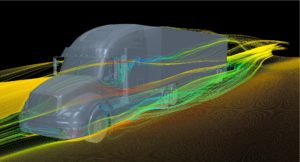On February 12, 2016 the management of Actasys Inc. will have a telephone conference with potential investors and their advisors about the firm’s prospects. I have arranged for Alfred University to have access to this call.
Actasys, Inc. Actasys is developing active aerodynamic systems by leveraging a technology developed for aerospace applications. It is a platform technology that can significantly improve energy efficiency and reduce costs in a wide variety of markets, including transportation, automotive, wind turbines, and buildings. Actasys is currently focusing on the transportation market with a product that increases the fuel efficiency of Class 8 trucks by up to 18%. The technology is based on synthetic jets, actuators that with a minimal amount of power can create very powerful jets of air, redirecting the main airflow in the desired directions.



